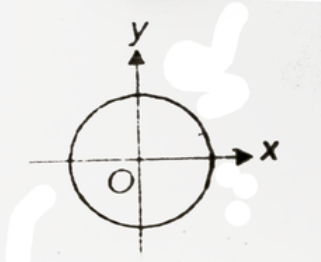A
B
C
D
Text Solution
Verified by Experts
The correct Answer is:
Topper's Solved these Questions
MOTION IN A PLANE
AAKASH INSTITUTE|Exercise Assignement section -C Objective (More than one option is correct)|5 VideosMOTION IN A PLANE
AAKASH INSTITUTE|Exercise Assignement section -D (Linked Comprehension)|8 VideosMOTION IN A PLANE
AAKASH INSTITUTE|Exercise Assignement section -A Objective (one option is correct)|50 VideosMOCK_TEST_17
AAKASH INSTITUTE|Exercise Example|15 VideosMOTION IN A STRAIGHT LINE
AAKASH INSTITUTE|Exercise ASSIGNMENT (SECTION - D)|15 Videos
Similar Questions
Explore conceptually related problems
AAKASH INSTITUTE-MOTION IN A PLANE-Assignement section -B Objective (one option is correct)
- An object moves at constant speed along a cicular path in a horizontal...
Text Solution
|
- A particle moves on the curve y = x^(2)/4 where x=t/2. x and y a...
Text Solution
|
- A body is prodected with initial velocity ( 5hati + 12hati) m//s from ...
Text Solution
|
- A particle moves along the positive branch of the curve y = (x^(2))/(2...
Text Solution
|
- One second after the projection, a stone moves at an angle of 45^@ wi...
Text Solution
|
- The horizontal range of a projectile is R and the maximum height attai...
Text Solution
|
- The speed of a projectile when it is at its greatest height is sqrt(2/...
Text Solution
|
- If the horizontal range of a projectile be a and the maximum height at...
Text Solution
|
- A grasshopper can jump a maximum horizontal distance of 40cm. If it sp...
Text Solution
|
- A body is projected horizontally with a speed v(0) find the velocity o...
Text Solution
|
- A particle is thrown with the speed u at an angle alpha with the horiz...
Text Solution
|
- A projectile is thrown with an initial velocity (v(x)hati + v(y)hatj) ...
Text Solution
|
- A particle is projected with a velocity of 30 m/s at an angle theta...
Text Solution
|
- A projectile has same range for two angules of projection. If times of...
Text Solution
|
- A particle is projected with velocity 50 m/s at an angle 60^(@) with...
Text Solution
|
- A projectile is fired to have maximum range 500 m. Maximum height atta...
Text Solution
|
- A particle projected at some angle with velocity 50 m/s crosses a 20 m...
Text Solution
|
- Two paper screens A and B are separated by a distance of 100m. A bulle...
Text Solution
|
- A stone is thrown from the top of a tower at an angle of 30^(@) above...
Text Solution
|
- A level flight olane flying at an altitude of 1024 ft with a speed of ...
Text Solution
|
